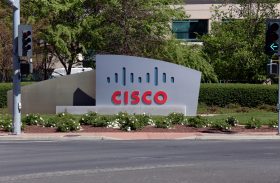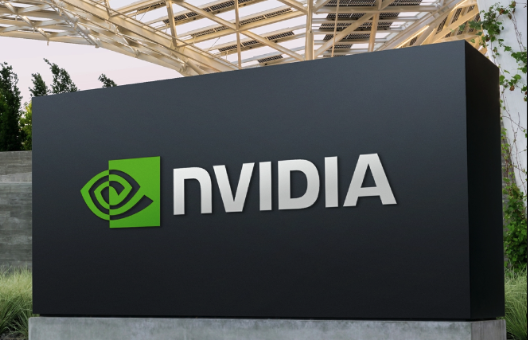Cisco Shrinks Campus and Cuts Staff, Ending an Era

Cisco's massive restructuring proceeds and it appears to hint at bigger things to come. The company is repositioning itself, laying off a significant portion of the workforce, and shuttering much of the real estate on its iconic Silicon Valley campus.
All this activity indicates a commitment to reorganization that’s been long anticipated and badly needed. But questions remain as to whether these measures are being taken in the right places and whether they will result in a more efficient and profitable company. Let’s break it down.
The Cost of Layoffs
Cisco’s widely publicized layoffs have affected over 9,000 workers this year—about 4,000 in a layoff of about 5% of the total employee population in February 2024, and another, more recent, layoff of about 5,600 (or roughly 7%) in September. In total, at the end of this year, Cisco will have laid off 12% of its work force. The company anticipates it will pay nearly $2 billion on these two restructuring measures—$654 million for February’s layoff and an anticipated $1 billion for September’s.
A major cost of the layoffs may be intangible. “When I left in February, morale was pretty bad,” said one of those let go in the first layoff round. “They laid off across the board—they laid off managers, they laid off distinguished engineers.”
When Cisco announced its plan in August to eliminate over 5,000 more jobs, the company forced employees to wait nearly a month to find out who was specifically affected—a plan that resonated poorly with staff, some of whom took the opportunity to try and jump ship. “It’s a lot of anxiety, but the month heads up has given me time to prepare my resume and put out some applications thankfully,” wrote one Cisco employee caught in the month-long limbo, who commented on Reddit. “Our team morale however is in the gutter, and makes getting work done very difficult.”
So far this year, Cisco’s layoffs hadn't reduced the overall employee population by that much. As of July 27, 2024, Cisco had 90,400 employees, a 6% increase over the prior year. But that likely includes a lot of Splunk employees. The feeling is that the current round of Cisco layoffs is affecting a lot of workers and will have a bigger impact. Certainly, 7% of nearly 90,000 amounts to a 6,300 reduction in headcount, so you can expect the math to change. Ultimately, only upcoming financial reports will reveal to what extent the layoffs have been effective in reducing Cisco’s total operating costs.
Splunk’s Role Expands, But Can They Integrate?
Some of the layoffs reportedly have affected Cisco’s Talos Intelligence Group, which focuses on cyber threat investigation and prevention. At the same time, however, Cisco mentioned in its latest quarterly SEC filing that “Our Threat Intelligence, Detection, and Response offerings incorporate the technologies of Splunk to prevent, detect and respond to sophisticated cyber attacks.” Cisco’s emphasis on Splunk indicates that it’s possibly focused on replacing existing personnel with some essential Splunk workers.
Notably, Cisco’s paying over $1 billion to hold onto some Splunk personnel. In May 2024, Cisco’s EVP and Chief Customer and Partner Officer Jeff Sharritts left the company after a 20-year tenure, and Gary Steele, formerly Splunk’s CEO, became Cisco’s President of Go-to-Market. To retain Steele, along with six other executives and other employees still in charge of Splunk, Cisco paid $413 million in fiscal 2024 and projects a payment of up to $1.1 billion in the future.
Splunk’s role is certainly expanding at Cisco. The question is whether Cisco can successfully integrate Splunk’s wares into its roster of existing products, including AppDynamics and ThousandEyes. In the past, Cisco has taken criticism for having too many distinct products that sometimes end up competing with one another, and there’s little sign the company’s learned its lesson when it comes to observability. Cisco’s latest 10K continues to describe the Splunk products and its own AppDynamics and ThousandEyes as separate solutions:
“Our network assurance offering, ThousandEyes, is a network intelligence platform that provides in-depth visibility into network and internet performance. Our Observability Suite offering, including Splunk Observability and AppDynamics, provides complete visibility across the full stack from infrastructure to applications as well as the digital customer experience.”
Office Consolidations
Cisco’s also restructuring its offices and consolidating employee locations. According to a report by the San Jose Mercury News, Cisco is closing four buildings at 3750 Zanker Road and at 260, 300, and 350 East Tasman Drive in San Jose and moving affected employees across town to Santana Row at 3098 Olsen Drive. The moves were set to begin October 12.
Meanwhile, in San Francisco, Cisco is closing the former Splunk headquarters at 270 Brannan Street and moving affected employees to its own office at 500 Terry A. Francois Blvd.
We contacted Cisco to confirm these closings, but have heard nothing as of this writing. But according to several news outlets, Cisco made the following statement:
“We are bringing our Cisco and Splunk teams in the Bay Area closer together to drive greater collaboration, improve cost efficiencies within our real estate portfolio, and create an environment where our people can thrive and drive innovative solutions for our customers and growth for Cisco.”
While it consolidates offices and lays off workers, Cisco also is reportedly opening a manufacturing facility in Chennai, India—a location where it was supposed to have opened a similar facility back in 2006. Focused on advanced routing products, the new plant reportedly involves a partnership with Flex (formerly Flextronics) and is expected to bring 1,200 jobs to the area. Questions about how this “new” facility compares to the one opened in 2006 went unanswered as of this writing.
Bottom line: Cisco is making moves that could reduce costs and improve operational efficiencies. But the essential piece—effective integration of acquired products and personnel—remains a question.

















